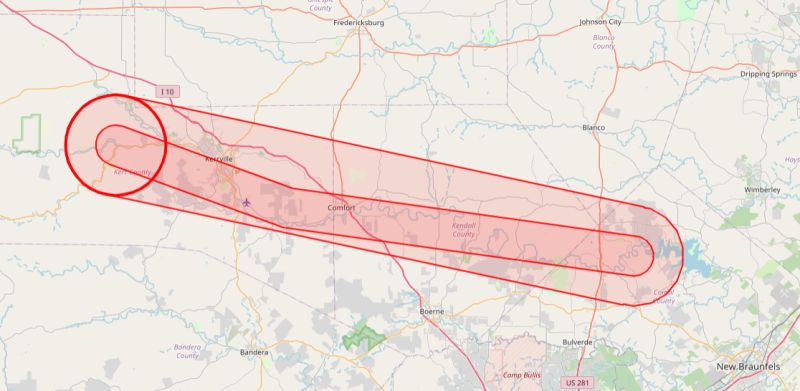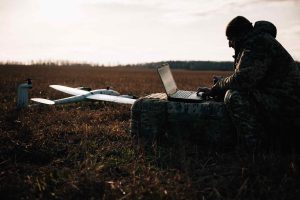Warning to Drone Pilots: The Dangers of Illegal Flights During Flood Emergencies
When disaster hits, the airspace is shared not only by rescue helicopters and official drones but sometimes by hobbyists keen to capture dramatic scenes or lend assistance. However, a recent incident in Kerr County, Texas serves as a costly reminder that neglecting airspace regulations during crises can endanger lives, property, and crucial rescue operations.
What Happened in Kerr County?
During the severe floods of July 2025, a rescue helicopter was forced to make an emergency landing after a collision with a privately operated drone flying illegally within a Temporary Flight Restriction (TFR) zone. The helicopter, vital for search and rescue, was rendered non-operational, leaving lives at risk while air support was removed.
Key Facts:
- The drone operator, still unidentified, flew without permission in restricted airspace.
- The helicopter was conducting active rescues, contributing to the over 800 aerial rescues conducted within two days.
- Officials emphasized that such incidents are completely preventable, underlining that TFRs are federally enforced rules, not recommendations, that save lives.
Why Are Drone Restrictions So Strict During Disasters?
The Role of Official Drones and Aviation in Emergencies
Modern rescue crews depend extensively on both helicopters and drones to:
- Quickly survey affected areas
- Locate missing individuals using visual and infrared sensors
- Direct rescue boats and ground crews to those in need
These tasks require clear and safe airspace with precise coordination. Unauthorized drones can cause:
- Collisions or near-misses, endangering rescuers and victims
- Pilots to engage in evasive actions, wasting crucial time
- The grounding of irreplaceable emergency vehicles, as seen in Kerr County
The Law: What Drone Pilots Must Know in 2025
Federal Regulations (FAA):
- Temporary Flight Restrictions (TFRs): Legally mandatory no-fly zones set during emergencies, major events, or VIP movements.
- NOTAMs (Notices to Air Missions): Updated notifications on airspace restrictions—essential for pilots to check before each flight.
- FAA Part 107 (Commercial) & 44809 (Recreational): Drones must not operate in controlled or restricted airspace without explicit authorization, irrespective of weight.
Key Rules for All Pilots:
- Register drones over 250g
- Don’t fly above 400 feet
- Maintain visual line of sight
- Avoid restricted areas and TFRs
- Never interfere with emergency response efforts
Penalties: Breaking TFRs can result in heavy fines, enforcement actions, and even criminal charges. Critically, reckless flights can neutralize critical equipment and risk lives.
Lessons from Kerr County: Real-World Consequences
Human Costs
- A rescue helicopter was put out of action during life-or-death missions.
- Rescue efforts delayed, potentially increasing fatality numbers that already surpassed 90 along the Guadalupe River.
- Rescue teams had to manage both their mission and airspace threats.
Technical and Legal Challenges
- Sub-250g drone pilots often remain unregistered, complicating operator identification if incidents occur.
- Despite calls for stronger enforcement, agencies grapple with anonymity and the sheer ease of purchasing small drones.
Public Response
- Authorities have issued urgent advisories: “PLEASE GROUND YOUR DRONES UNTIL CURRENT FLOOD SEARCH AND RESCUE OPERATIONS ARE COMPLETE.”
- Experts reiterate: “TFRs are not suggestions. They are rules designed to save lives.”
How to Fly Responsibly: Expert Tips and Tools
Before You Fly—Checklist
- Check for TFRs: Always review the FAA TFR Map before flight.
- Review NOTAMs: Search the FAA website for the latest airspace restrictions.
- Register and Label: Ensure your drone complies with legal registration and labeling.
- Use the B4UFLY App: FAA’s app provides instant updates on local airspace regulations.
- Stay Informed: Subscribe to local emergency alerts in disaster-prone regions.
If You Want to Help
- Partner with Official Agencies: Seek out calls for certified pilot volunteers during large-scale emergencies.
- Don’t launch unless requested: Well-intended but unauthorized flights can cause disruption.
If you witness unsafe drone use: Politely remind pilots of current restrictions. Report persistent violations to local authorities or the FAA.
What’s Next? The Evolving Landscape of Drone Law
New Policy Trends in 2025:
- Remote ID: All drones must now broadcast their location and ID, enhancing traceability post-incidents.
- Streamlined Reporting and Enforcement: Efforts are underway to improve violator identification and penalization, while safeguarding hobbyists’ rights.
Community Voices:
- Responsible pilots advocate for greater public drone education, accountability, and better integration of recreational flying in national safety.
- With American irony, some quip, “If you wanna ban toys and birds, then mention them in the TFR”—yet the rules are explicit for all drones, big and small.
A Human Approach: Who Are the People Behind the Rules?
Every regulation and emergency call has one fundamental objective: protecting lives. Our team, including drone pilots, responders, and legal experts, collaborates during crises to ensure both safe operations and respect for life-saving professionals.
Real Success Stories
- In a recent mission, FAA-licensed pilots invited by the local sheriff’s office used thermal drones to quickly locate stranded families due to prior coordination and understanding of emergency airspace regulations.
- Community workshops have educated hundreds of new pilots on responsible flying in shared skies.
Final Thoughts: Stay Grounded, Stay Safe
During the historic floods in Kerr County, the line between a successful rescue and tragedy was drawn by seconds, and by split-second decisions of those with aerial access. If you operate drones:
- Learn the rules.
- Check for restrictions every time.
- When disaster happens, let professionals do their jobs.
- If you want to assist, do so appropriately—by training, certification, and engagement with authorized agencies.
Drones are powerful—when used responsibly, they can save lives, foster community, and inspire creativity. Used carelessly, they can jeopardize all three.
Fly wisely. Fly legally. And when unsure, leave the skies to those tasked with rescue, until safety is restored.













